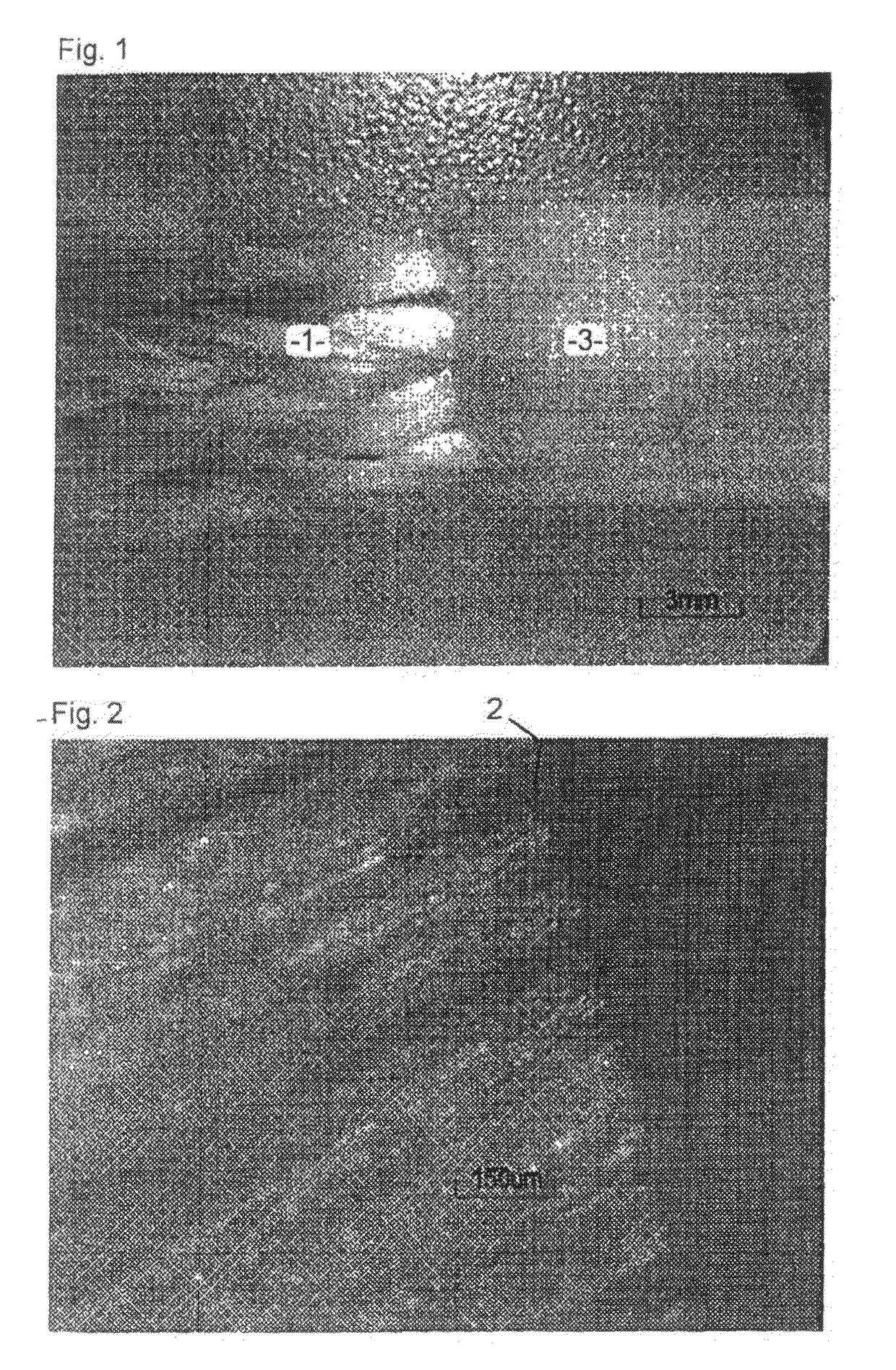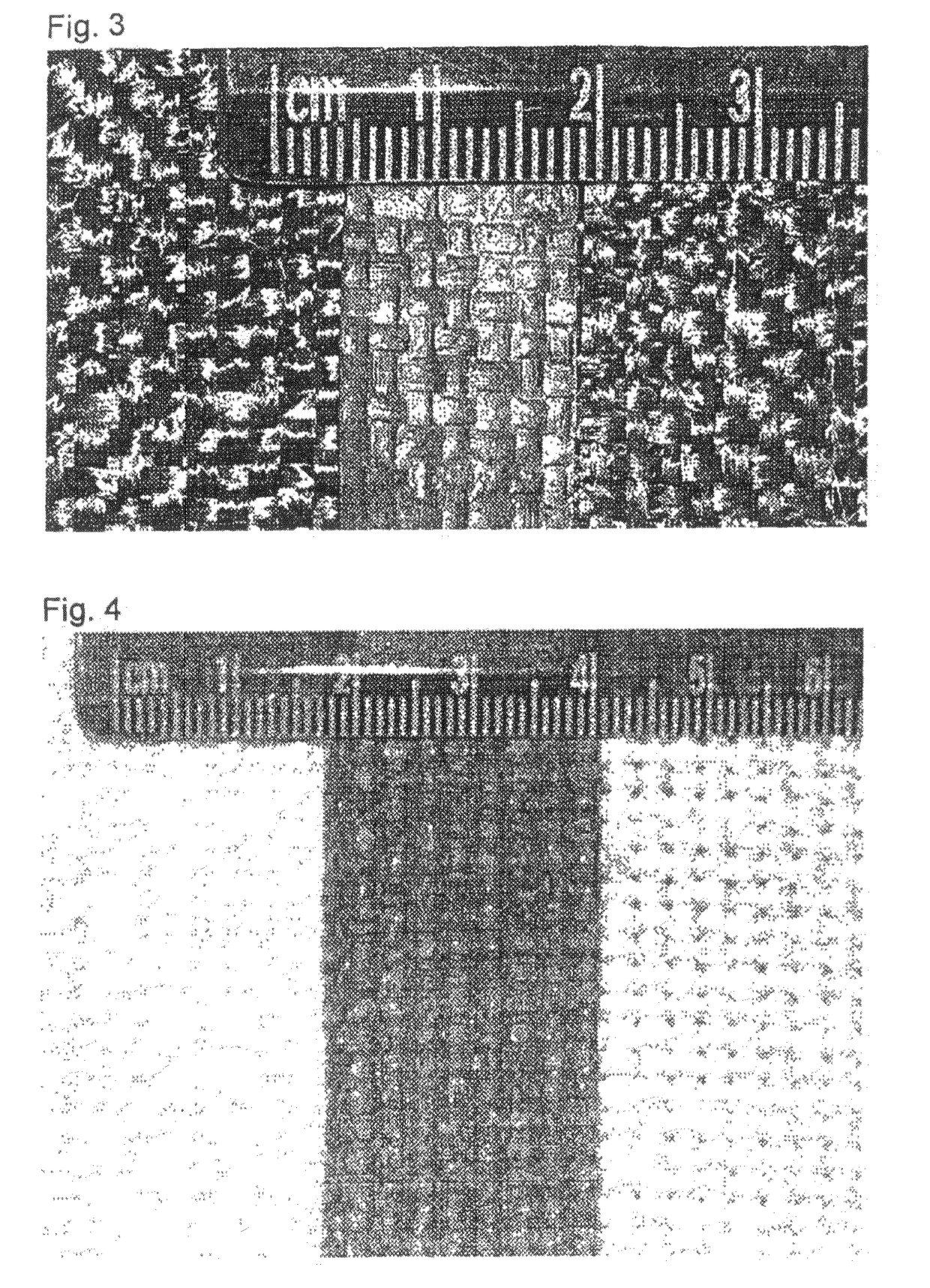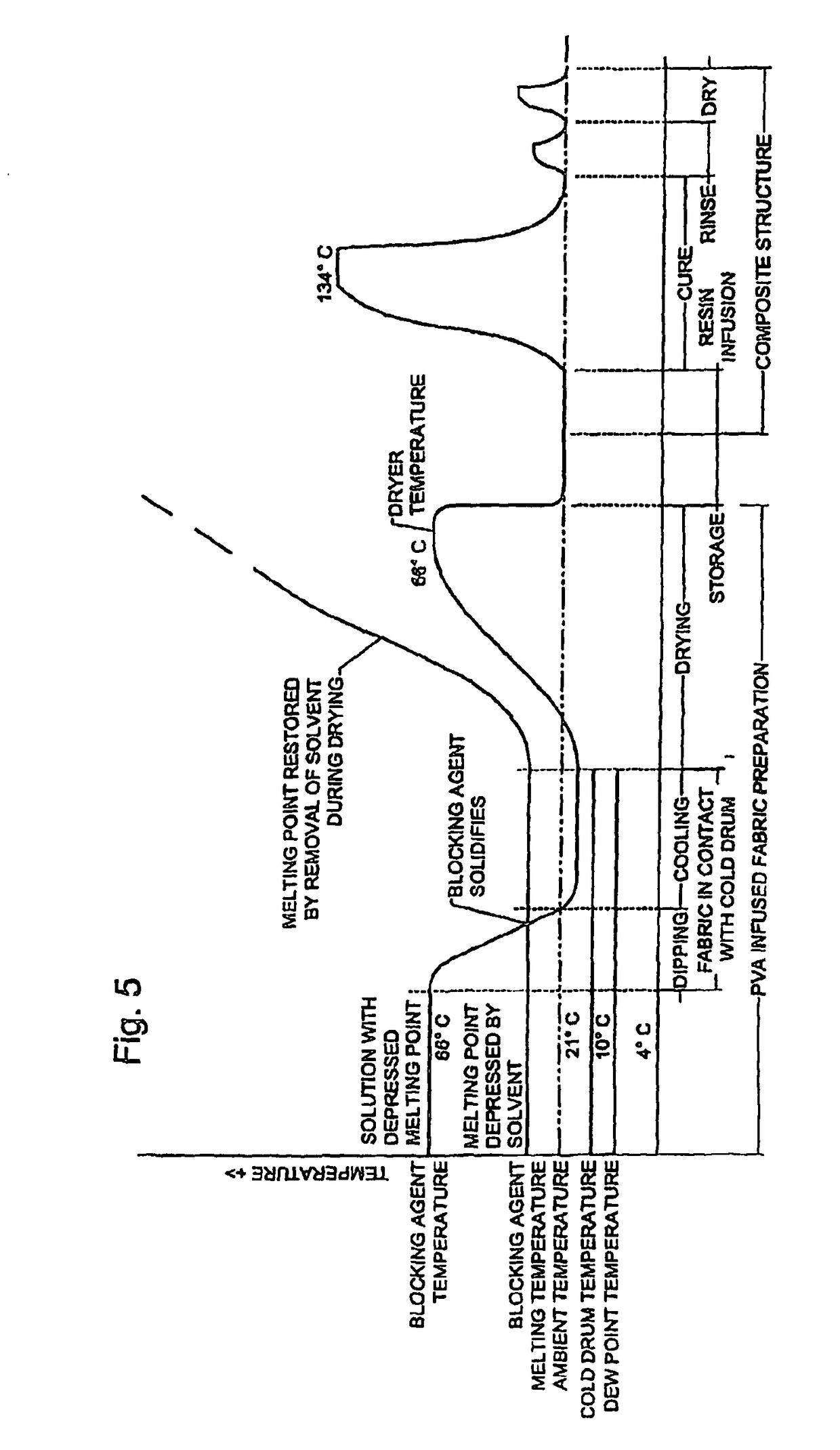Process of manufacturing fiber reinforced composite via selective infusion of resin and resin blocking substance
a fiber reinforced composite and selective infusion technology, applied in the field of fiber reinforced structure connection, can solve the problems of high cost, low reliability, and labor intensity of various processes for increasing surface energy and availability of potential bond sites, and achieve the effect of high strength connection, reliable transfer, and enhanced integrity of combined structur
- Summary
- Abstract
- Description
- Claims
- Application Information
AI Technical Summary
Benefits of technology
Problems solved by technology
Method used
Image
Examples
Embodiment Construction
[0047]Referring to FIGS. 1 and 2, a braided glass fiber cord at an initial temperature of 20 deg C., has been momentarily dipped in molten paraffin so as to allow infusion (wicking) of the molten paraffin to an intended future resin boundary. The infusion extends to a boundary 2 at which the molten paraffin dropped in temperature sufficiently to begin solidification and ceases to infuse. A transient temperature gradient thus controlled the extent of paraffin infusion. The paraffin in this case was used as a resin blocking substance. The specimen shown in FIGS. 1 and 2 was subsequently cooled to solidify the paraffin, infused with epoxy resin which that was then allowed to cure, and then cleaned of paraffin by sublimation and solution. The infusion of epoxy resin (under effectively isothermal conditions) was precisely controlled by the paraffin infusion boundary 2 between glass fiber infused with subsequently cured epoxy resin 3 and non-infused glass fiber 1. Such an arrangement is u...
PUM
| Property | Measurement | Unit |
|---|---|---|
| length | aaaaa | aaaaa |
| length | aaaaa | aaaaa |
| length | aaaaa | aaaaa |
Abstract
Description
Claims
Application Information
 Login to View More
Login to View More - R&D
- Intellectual Property
- Life Sciences
- Materials
- Tech Scout
- Unparalleled Data Quality
- Higher Quality Content
- 60% Fewer Hallucinations
Browse by: Latest US Patents, China's latest patents, Technical Efficacy Thesaurus, Application Domain, Technology Topic, Popular Technical Reports.
© 2025 PatSnap. All rights reserved.Legal|Privacy policy|Modern Slavery Act Transparency Statement|Sitemap|About US| Contact US: help@patsnap.com



